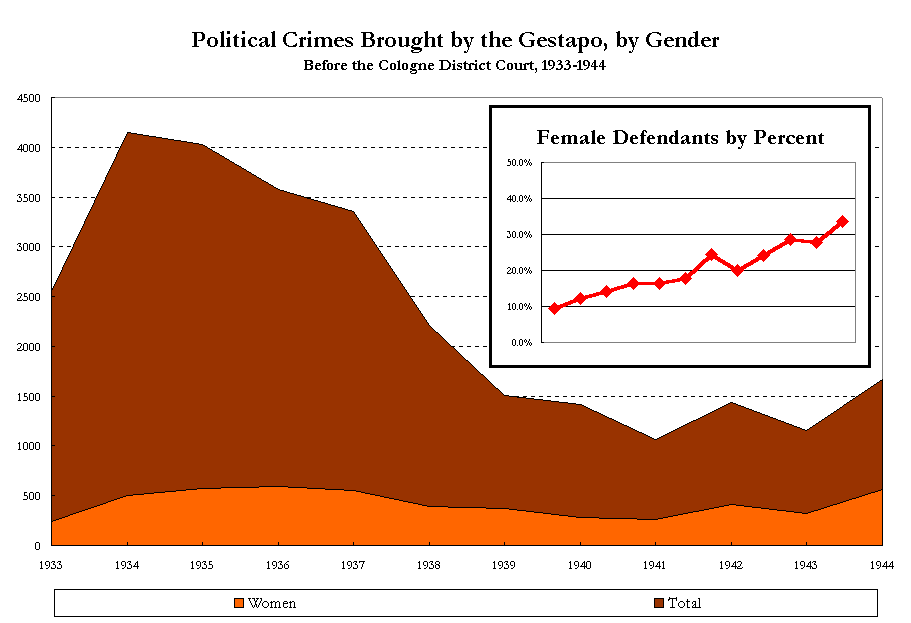
Was the National Socialist regime "gender-blind" in the persecution of political opposition? This chart suggests that the answer was an emphatic "no". It is based on 28,118 cases, initiated by the Gestapo and then passed on to the State Prosecuting Attorney's Office (Staatsanwaltschaft) in Cologne, in which the gender of the accused is known (99.3% of all cases). On the one hand, it shows that women were hardly "beneath suspicion," as some have argued: the percentage of women prosecuted for political crimes increased steadily throughout the period of Nazi rule, from roughly 10% in 1933 to over a third by the end of the war. But in absolute terms, the number of males accused was far greater. Indeed, much of the percent increase in prosecutions of women after 1939 may reflect the effects of conscription.
What, if anything, do these figures suggest about women's involvement in resistance against the National Socialist regime? On balance, it appears to confirm the argument that female participation in active resistance was around 20%. Yet caution is warranted here, too: the estimate is based solely on acts that came to the attention of authorities. Moreover, a large percentage of the "crimes" reflected in these data were nothing more than libellous statements against the regime (Heimtücke) -- dangerous activity, to be sure, but on an order of defiance far less than that of organized, ideologically and morally inspired opposition. Women were disproportionately well-represented among such defendants: in 1935, for example, nearly half of the women were accused of slandering the regime.
Similarly, the chart reflects shifts and turns in the Gestapo's priorities: the slump in prosecutions after 1940, for example, is probably attributable to its preoccupation with deporting the Jewish population of Cologne. Similarly, these data do not include cases which the Gestapo did not refer to the civilian court system -- cases against foreign workers, for example. Nevertheless, as Eric. A. Johnson argues, these figures point toward a "rapid decline in political cases in the first rather successful years of the war, but toward a significant increase in cases, both for women and men, beginning in 1942.
Source: Eric A. Johnson, "German Women and Nazi Justice: Their Role in the Process from Denunciation to Death," Historical Social Research / Historische Sozialforschung 20/1 (1995): 33-69.